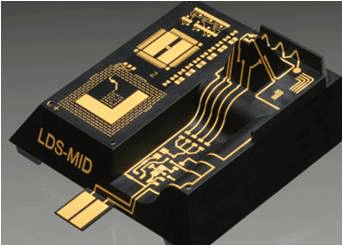Molex, a major supplier of electronic interconnects, is now molding complex, three-dimensional electronic components for medical applications.It's an important move to leverage the company's massive capability to make cell phone antennas into what's viewed as a huge, emerging demand in the medical market for devices that transmit information from patients at home to doctors in hospitals.
November 7, 2011
Molex, a major supplier of electronic interconnects, is now molding complex, three-dimensional electronic components for medical applications.
It's an important move to leverage the company's massive capability to make cell phone antennas into what's viewed as a huge, emerging demand in the medical market for devices that transmit information from patients at home to doctors in hospitals.
|
Home healthcare telemetry will drive use of antennas in medical devices. |
Called MediSpec, the focus of the Molex capability is on the Laser Direct Structuring (LDS) process developed by LPKF (Garbsen, Germany). Molex has been using the LDS technology for three years to produce cellphone antennas. A circuitry pitch of 0.35mm (0.014-inch) and lines and spaces down to 0.10mm (0.004-inch) are possible in high-volume, subject in certain situations to molding limitations.
"Miniaturization and portability trends are driving medical device developers to create more robust, reliable and affordable electronic devices for the diagnosis and treatment of millions of patients worldwide," says Anthony Kalaijakis, strategic medical market manager, Molex. "By combining the versatility of the two-shot molding process for MID with the speed and precision of LDS capabilities, we have created a technology solution that directly addresses current needs in the medical device industry."
The LDS technology is also suitable for miniaturization strategies, featuring circuitry that can be imaged with a 3-axis laser on a variety of RoHS-compliant plastics with pattern modification.
Additionally, because developers can create prototypes they realize a greater cost savings. LDS technology allows them to experiment with the placement of traces and shielding by making changes to the laser position without having to invest in expensive tooling changes.
Blood glucose meters
Target applications in the medical industry include blood glucose meters, drug delivery systems, home healthcare telemetry, remote patient monitoring systems, disposable catheter interfaces, neurostimulation controllers, pulse oximeter sensors, Continuous Positive Airway Pressure (CPAP) devices and Integrated Radio-Frequency Identification (RFID) solutions.
Potential material combinations include syndiotactic polystyrene, liquid crystal polymer, and polycarbonate with polycarbonate/ABS.
Established in 1938, Molex operates 39 manufacturing locations in 16 countries. The antenna manufacturing capability is centered in Shanghai. Molex announced in 2010 that it produced its 100 millionth antenna with LDS technology since starting the production of LDS antennas in summer 2008. With LDS, antenna designs can be transferred directly to a device cover.
Molex's core manufacturing expertise includes molding, stamping, plating and assembly operations. Molds at Molex are usually dedicated to a single product group. The different types of molds used at Molex are: custom, pocket, discrete, and expandable.
Molex gets its name from a plastic developed by the late Frederick August Krehbiel, who started the Molex Products Co. in 1938. The company, then based in Brookfield, Ill., made clock cases, flower pots, valve wheels and other products from that material. Today, it's one of the five largest manufacturers of molded interconnect device (MID) antennas in the world.
In one indication of its size, the value of all molds and dies used at Molex in its 2011 fiscal year was $807 million, up from $743 million in the previous year.
You May Also Like



